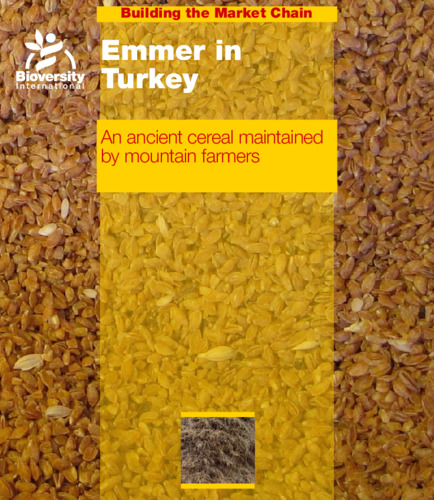Emmer in Turkey: An ancient cereal maintained by mountain farmers
Emmer (Triticum dicoccon) has been cultivated in the Fertile Crescent of the Middle East for 10 000 years. It is one of a family of three ancient crops, known as hulled wheats, whose once-popular cultivation has dwindled in recent years. The other two are einkorn (Triticum monococcum) and spelt (Triticum spelta). Emmer spread to Europe from the Near East in the Neolithic period. During Roman times, it was the main food grain in much of Europe. From the beginning of the 20th century, however, farmers began to turn away from emmer in favour of common and durum wheat (naked wheats), which are easier to clean and process and have higher yields. As a consequence, emmer almost disappeared from Europe and the Near East in the second half of the 20th century.Turkey was no exception to this trend. Emmer cultivation decreased radically from the beginning of the last century. The only remaining pockets of emmer today are grown by resource-poor farmers in marginal areas at 1000-2000 metres above sea level. These farmers use emmer mainly as animal feed. The main areas of emmer production in Turkey today are in Kastamonu and Sinop provinces, in the central northern part of the country. No other crop can be grown as successfully in these areas. Nevertheless, its survival may also be at risk here too because of changes in taste, the increased impact of global and regional markets, difficulties in processing and limited marketing. On the positive side, new market opportunities may be on the horizon thanks to emmer's nutritional and health properties. Already there is evidence of a growing appreciation of emmer among niche consumers in towns, creating new market opportunities.

